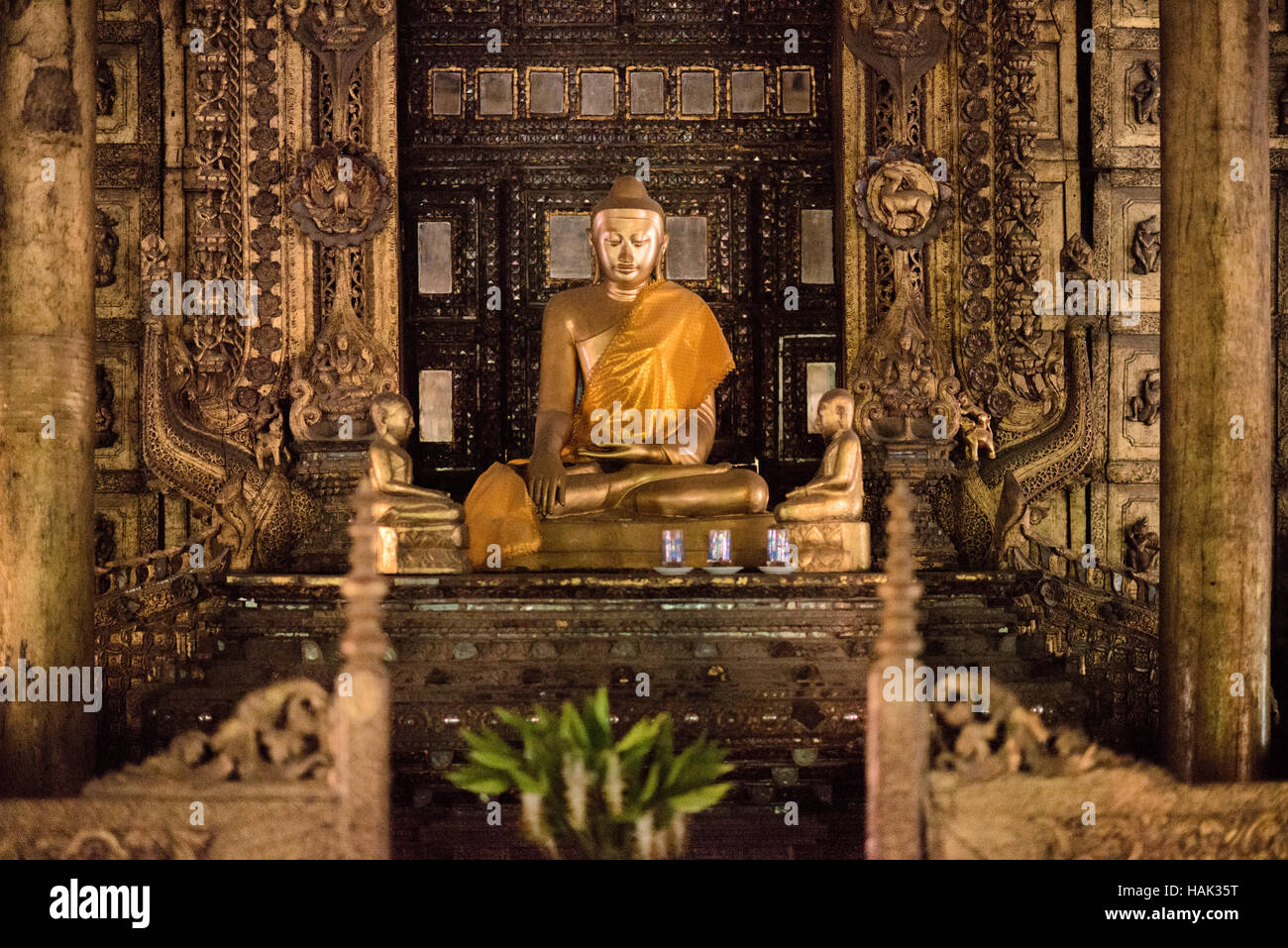MANDALAY, Myanmar (Burma) — Built in 1880 of carved teak, Shwenandaw Monastery was originally part of the Royal Palace at Amarapura. It was later moved to a site near Mandalay Hill in Mandalay. It is built in the traditional Burmese architectural style and is notable for its ornate carvings of Buddhist mythology and its interior featured extensive guilt work and glass mosaics.

Image details
Contributor:
David Coleman | Have Camera Will Travel / Alamy Stock PhotoImage ID:
HAK35TFile size:
85.9 MB (9 MB Compressed download)Releases:
Model - no | Property - noDo I need a release?Dimensions:
6706 x 4476 px | 56.8 x 37.9 cm | 22.4 x 14.9 inches | 300dpiDate taken:
3 October 2015Location:
Aungmyaythazan, Mandalay, Mandalay Region, Myanmar (Burma)More information:
The Shwenandaw Monastery, also known as Shwenandaw Kyaung, is a historic Buddhist monastery located in Mandalay, Myanmar. Built in the 19th century, this exquisite teak wood structure is a fine example of traditional Burmese architecture and craftsmanship. Originally, the monastery was part of the royal palace complex in Amarapura before being moved to Mandalay by King Mindon. It is believed that King Mindon used the building as a personal apartment and passed away within its walls. After his death, his son King Thibaw had the structure dismantled and reconstructed as a monastery in its current location, fearing it was haunted by his father's spirit. Shwenandaw Monastery is renowned for its intricate wood carvings, which adorn both the interior and exterior. These carvings depict scenes from the Jataka tales, stories of the previous lives of the Buddha, as well as traditional Burmese floral motifs and mythical creatures. The monastery was originally gilded in gold, which is why it is sometimes referred to as the Golden Palace Monastery. However, the gold has mostly worn off over time, leaving the intricately carved teak wood exposed.